Geothermal heating and cooling are the most popular choices for home and office use in the quest for sustainable energy solutions. The HDPE Ground Source Heat Pump pipe is at the core of this technology, allowing for efficient heat transfer from earth to premises. In addition, this article discusses why one would use HDPE GSHP pipes and their resilience, efficacy, and environmental benefits. Understanding how these pipes operate within a geothermal system will reveal why they are considered the best solution to attain comfortable indoor climatic conditions, energy savings, and minimal carbon footprints. The reader may be a homeowner considering going geothermal or an industry professional who needs innovation; this blog will be informative as it takes you through your sustainability journey.
What is an HDPE Geothermal Pipe?
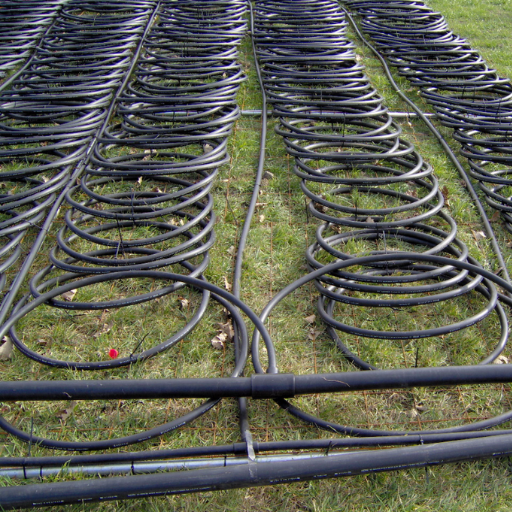
Image source: https://encyclopedia.pub/
High-Density Polyethylene (HDPE) Geothermal Pipe is polyethylene tubing specifically designed for use with ground source heat pump (GSHP) systems. It mainly functions as a conduit between heat exchange fluids from the earth and the heat pump unit. These pipes are light and can easily fit different soils while resistant to corrosion and chemical breakdown, thus giving them long lives of service. With improved heat transfer rates compared to other geothermal heating or cooling systems materials, HDPE pipes offer better performance outcomes in such installations.
Understanding HDPE Material
High-Density Polyethylene (HDPE) has a high strength-to-density ratio, which makes it a versatile thermoplastic. It is derived from petroleum and has numerous applications in pipes, containers, and plastic lumber. HDPE works well in geothermal systems due to its good resistance to chemicals, strength, and very low thermal conductivity. This quality makes HDPE pipes survive extreme temperatures and weather conditions, thus making them ideal for installation underground on a long-term basis. Moreover, it is light in weight and flexible, hence easy to install, thereby minimizing labor costs. In summary, HDPE’s resilience and effectiveness make it an optimal choice as an energy-saving option, especially in green building practices.
Why Use HDPE in Geothermal Applications?
Utilizing HDPE for geothermal purposes provides many benefits that enhance system performance and sustainability. First, the excellent corrosion resistance offered by HDPE ensures that the pipe will not degrade over time, regardless of soil conditions or fluids involved therein. Consequently, operational costs are minimized, and the reliability of geothermal systems’ maintenance expenses is increased. Secondly, HDPE adds lightweight features and flexibility, simplifying installations and leading to easier handling while providing lower overall labor charges. Furthermore, these conduits allow excellent heat transfer between the ground and the heat pump by being highly thermally efficient, which results in energy conservation. Lastly, this material also contributes towards sustainable construction by being recyclable, hence helping maintain environmentally friendly policies; such factors make it relevant for those people who consider eco-friendly solutions when using geothermal as their source of energy, among others.
Benefits of HDPE Pipe for Geothermal Systems
- Corrosion and Chemical Resistance: HDPE pipes are highly immune to corrosion and a wide range of chemicals, so they are more durable even in adverse underground environments. This resistance will lower the chances of degradation, thereby enhancing the longevity of geothermal systems.
- Thermal Efficiency: HDPE can maintain the required temperature within the geothermal system more effectively with relatively low thermal conductivity compared to other materials. This aspect helps improve heat exchange between fluids circulating through pipes and ground, thus maximizing energy efficiency.
- Lightweight and Flexible: Compared to conventional materials, HDPE pipes are much lighter, which makes installation more accessible in terms of transportation and handling. In addition, they have better installation options. They can be easily bent at sharp angles or turned around, facilitating faster installations, mainly where space is limited.
- Cost-Effectiveness: Since ease of installation reduces labor costs while durability lowers maintenance expenses, HDPE becomes an economical choice for geothermal systems.
-
Environmental Sustainability: Materials used to produce this material are recyclable, making it a green choice. Using HDPE pipes encourages sustainable building practices and reduces the ecological footprint associated with geothermal energy installations.
How Does a Ground Source Heat Pump System Work?
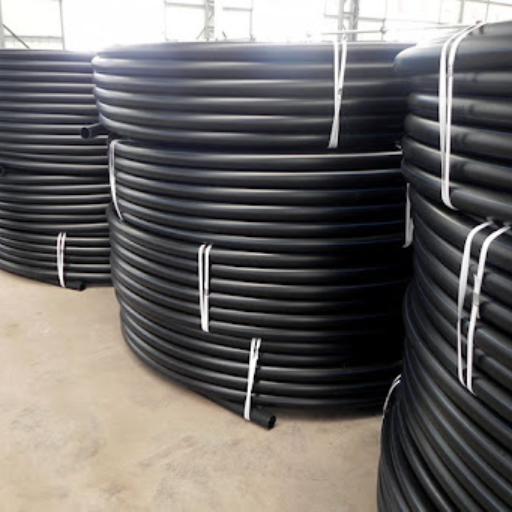
A ground source heat pump (GSHP) is an engineering system that utilizes the earth’s natural heat to heat and cool buildings. The system consists of underground pipes called a ground loop, which circulates fluid, usually water, mixed with antifreeze. During winter, the fluid takes up heat from the ground and carries it into the heat pump, where it is compressed, thus increasing its temperature before being discharged into the house. However, this is reversed in summer, whereby instead of bringing cold air inside, it transfers hot air from indoors back into the ground. This makes it possible to maintain stable temperatures without consuming much energy.
Essential Components of a GSHP System
The Ground Source Heat Pump System (GSHP) has several main components that work together for efficient heating and cooling.
- Ground Loop: These are pipes buried beneath the surface, conveying the heat exchange liquid. Depending on their orientation, they may be either vertical or horizontal loop systems.
- Heat Pump Unit: This indoor component extracts warmth from liquid emanating from sub-ground circuits throughout winter and gives it out in summer. It contains compressors, condenser coils, and evaporator coils, which were mentioned earlier as expansion valves.
- Distribution System: Once they have been extracted by and conditioned through a heat pump, they are routed within buildings using ductwork in forced air systems or radiators for hydronic systems.
-
Thermostat Control: Nowadays, most GSHPs are equipped with smart thermostats, which allow homeowners to regulate indoor temperatures more effectively and exert greater influence over their heating/cooling schedules.
These components operate seamlessly together, providing an energy-efficient alternative to climate conditioning in commercial and residential buildings.
Heat Exchange Process Explained
To manage room temperatures properly, a good understanding of heat exchange processes in ground-source heat pump (GSHP) systems is needed. This involves transferring the heat between the ground and the building via the ground loop. In most cases, heat pumps extract thermal energy from grounds with relatively stable temperatures during winter and release it inside buildings. This involves refrigerant used within the pump that evaporates to absorb heat and then condenses, releasing it indoors.
On the contrary, during summer, the action of the air-conditioner installed in cooling systems is reversed; thus, it takes out hot air from a room and disposes it into the earth, after which it cools. Therefore, this aspect creates an opportunity for heating and cooling throughout the year while saving energy using the earth’s constant temperature. Overall, various attributes like proper sizing of the system as well as installation plus thermal conductivity of materials in the ground enhance the efficiency of this process.
The Role of HDPE Pipe in Heat Pump Systems
Ground Source Heat Pump (GSHP) systems require High-Density Polyethylene (HDPE) pipe due to its high strength, flexibility, and resistance to corrosion, among other advantages. HDPE pipes are often used in ground loops for geothermal heating systems, where they help move heat between the fluid flowing through them and the surrounding earth. They have smooth inside surfaces that reduce frictional losses, allowing efficient fluid flows necessary for maintaining optimum rates of exchanging thermal energy. Moreover, withstanding extreme pressures and temperatures by HDPE guarantees durability, hence fewer maintenance costs, while increasing the overall reliability of the HP-encompassing system. Also, HDPE is lightweight compared to traditional materials, thus making the installation process easy as well as their transportation in both residential and commercial sectors simple since only a few people may be involved in such kind of exercise, unlike other alternative materials such as metals or concrete, which are heavy-weighted.
What are the Specifications for HDPE Geothermal Pipes?
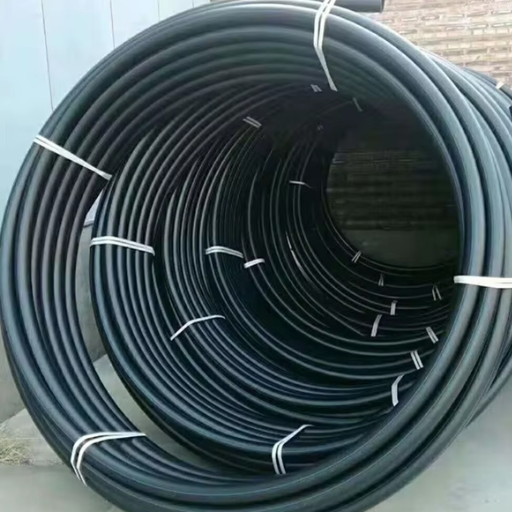
HDPE pipes are designed with specific features for effective geothermal pipes in ground source heat pump systems. This includes the following:
- Material: High-density polyethylene (HDPE) must follow ASTM D3350 for pipe quality.
- Diameter: Sizes commonly available range from 1 to 6 inches, depending on system needs.
- Wall Thickness: Generally based on diameter and application but may comply with SDR (Standard Dimension Ratio); typical ratings for geothermal use are SDR 11 or SDR 17
- Temperature and Pressure Ratings: The HDPE pipes must be rated to bear continuous heat of up to 180°F (82°C) and a minimum pressure of at least 160 psi suitable for heat pump systems.
- Longevity: Installation and maintenance conditions can make it last more than five decades.
- Compliance: To meet environmental safety measures, compliance must be achieved with both national and regional codes and performance standards.
These specifications ensure that HDPE pipes deliver efficient heat transfer while providing durability and reliability in geothermal applications.
ASTM Standards and Compliance
The adherence of HDPE Geothermal Pipes to ASTM Standards is essential in ensuring their integrity and efficiency in heating pump systems. The use of ASTM D3350 by HDPE pipes is required. This standard specifies the requirements for polyethylene plastics intended for piping systems, ensuring they meet tight quality and performance criteria. Also, ASTM F2619 presents guidelines for ground heat exchange-related geothermal piping systems. These standards not only assure material quality but also urge that installation methods conform to established practices, which results in enhanced safety and efficacy within the domain of geothermal energy. Thus, sticking to these rules allows manufacturers to boost customers’ confidence in the lifelongness, reliability, and adaptability of such tubes under specific environmental conditions in which they operate.
PE 4710 and Other HDPE Grades
In geothermal applications, this kind of high-density polyethylene (HDPE) is called PE 4710 and is known for its performance capabilities. It must be pointed out that this grade has met the toughness (Astm D1248) needed, resistance to cracking under stress and temperature (Astm D2837), and other superior properties, making it capable of long-term service in various environmental conditions. Besides PE 4710, there are other common HDPE grades, such as PE 3408, which may not deliver the same level of performance in harsh geothermal environments. They must consider the material type used and grading systems and ensure they are compatible with local authorities to get the best results.
Geothermal Pipe Sizing and Applications
Geothermal general pipes must be sized according to the heat load requirements given by the specific diameter and length of the pipe being matched for buildings or systems served by buildings. These can transfer heat between them better because larger pipes with wider diameters can support more fluid flow rates. Key determining elements regarding sizing include overall heating/cooling loads, ground thermal conductivity, and type of geothermal system applied (closed-loop Vs open-loop).
Geothermal piping systems heat/cool residential and commercial structures and agricultural undertakings like soil conditioning for farming purposes. Properly designed geothermal piping can save significant energy while contributing to the longevity and reliability of the entire system, ensuring long-lasting, sustainable heating and cooling solutions over the years. Periodic maintenance activities on this system will provide consistent peak performance.
Why Choose HDPE Pipes Over Other Plastic Piping Materials?
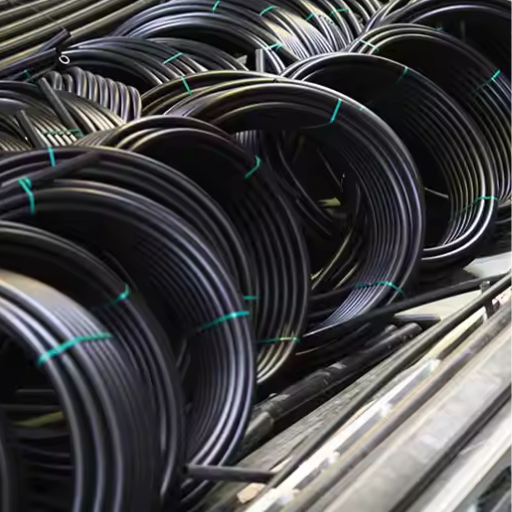
When considering plastic pipes, HDPE (High-Density Polyethylene) has many benefits over others and is also preferred in many applications. Firstly, high-density polyethylene pipes are renowned for their excellent resistance to corrosion and chemicals that guarantee a longer life span and lower maintenance costs compared to materials like PVC or CPVC. In addition, they can be easily installed in challenging terrains, and that reduces failure points, which means there is no need for joining fittings such as elbows, etc. Furthermore, HDPE possesses good impact strength and can withstand very high temperatures, making it suitable for geothermal and conventional piping systems. These characteristics improve not only the performance of the piping system but also its durability while enhancing sustainable operations.
Comparing HDPE with PEX and Other Materials
When comparing HDPE (High-Density Polyethylene) with PEX (Cross-Linked Polyethylene) and other materials, there are several key factors to consider. The first one is durability and resistance to HDPE material’s environmental pressures, making them suitable for underground applications and geothermal systems. In contrast, PEX scores highly on flexibility and ease of installation, especially when retrofitting existing buildings or doing residential plumbing since they do not require joints, reducing installation costs where necessary. However, exposure to ultraviolet light causes PEX to degrade; hence, it must be protected against sunlight when used outdoors.
Both HDPE and PEX are effective for thermal insulation purposes, but heat loss prevention for hot water systems favors PEX slightly more than the other option. Another difference between the two is that the long-term affordability of HDPE comes from its longevity coupled with low maintenance requirements. At the same time, PEX may demand regular tear-wear examinations within some environments. Furthermore, this particular polyolefin could be recycled at the end-of-life stage, whereas disposal methods for the other tend to be more limited by comparison. Therefore a choice between these materials will depend on project specific requirements such as site conditions, cost constraints, and life cycle of the piping system.
Durability and Longevity of HDPE
High-Density Polyethylene (HDPE) is renowned for its exceptional longevity and durability in various applications. Because of that, it can resist corrosion, chemicals, and impact forces; hence, it does not deteriorate even under extreme environmental conditions. It has a lifespan of more than half a century when properly installed and managed by industry experts making it reliable for domestic and commercial plumbing structures. As a result, HDPE’s strength is also boosted by its ability to take high pressure and temperature variations. Besides being long-lasting, many sources highlight that HDPE is eco-friendly because it can be recycled, thus reducing its overall ecological footprint. In conclusion, HDPE still becomes the best choice for projects where the main concern is for things to last.
Cost-Effectiveness and Efficiency
Several factors should be considered while evaluating the cost-effectiveness between HDPE and PEX, such as material cost, installation expense, and total system efficiency over the life cycle of the piping system. Lower upfront material costs and minimal maintenance make HDPE highly praised as it contributes to long-term savings on energy bills. Conversely, PEX materials could seem more expensive initially, but they might cut down on installation expenses due to their flexibility and ease of work, especially in intricate layouts. Efficiency matters too: while passing hot water through such systems’ walls, which have excellent thermal insulations and facilitate less energy loss, pipes are made from expansions like PEX tubing, which resist bursting during freezing weather conditions. Eventually, choosing between HDPE and PEX will depend on specific project requirements, such as budgetary limitations or long-term operational efficiency concerns.
What are the Installation Methods for HDPE Geothermal Piping Systems?
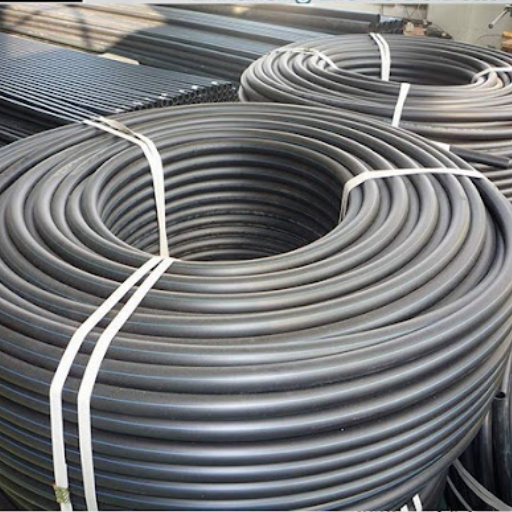
Several techniques are involved in installing HDPE geothermal piping systems, each designed for specific conditions at a particular site. One way is horizontal installation, where trenches are dug, and pipes are placed at a depth that allows maximum ground heat exchange. This approach is often preferred for residential installations due to its easy execution and low costs.
Conversely, vertical installations are used in places with less space or where deeper ground temperatures are favorable. In this method, boreholes are drilled, and HDPE pipes are placed vertically into the ground.
Alternatively, slinky configurations can be adapted into horizontal installations. This involves coiling the HDPEs into a spiral that optimizes surface area contact with the ground while reducing trenching.
Regardless of which method is chosen, it’s important to ensure proper joining and sealing of the HDPPE pipes to prevent leaks and maintain system efficiency. Adequate installation practices significantly determine how long geothermal heating units last and their effectiveness.
Closed-Loop Geothermal Systems
Geothermal systems in closed-loop make use of conduction to circulate a fluid—typically a mixture of water and antifreeze—through a loop of pipes buried underground. These systems can be placed horizontally or vertically based on the availability of space and ground conditions. The primary role played by the closed-loop system is to cool or heat a room by utilizing the earth’s constant sub-surface temperature that helps provide energy efficiently. This occurs through heat withdrawal from the ground during winter and transfer back into it during summer. Regarding installation, closed-loop systems are known for their durability, and they require very little maintenance, hence serving for several decades when correctly installed. Next, they are eco-friendly as they reduce reliance on fossil fuels, leading to lower utility bills due to increased energy efficiency.
Trenching vs. Drilling Techniques
Trenching versus drilling techniques are vital in determining the system’s efficiency and feasibility during geothermal installations. Trenching involves digging long, narrow ditches where horizontal piping loops will be laid across them. This approach is typically relatively cheap and straightforward, thus applicable to house constructions if enough land space is available. Moreover, this method requires substantial excavation that may interfere with an existing landscape, which is not ideal for compact areas with established landscaping.
Drilling entails installing boreholes vertically to place geothermal tubes inside them. Compared to trenching, this method is more suitable when one has limited space since it occupies a smaller area above the ground. Drilling usually accesses deep uniform temperatures below the topsoil faster; however, this comes at an extra cost while specific equipment should be used. The choice between trenching and drilling depends on factors such as site conditions, financial restrictions, and local regulations, among others, so optimum thermal performance can ultimately be achieved from these geothermal heating systems.
Connecting and Fitting the HDPE Pipes
It is necessary to connect and fit HDPE (High-Density Polyethylene) pipes to attain a geothermal system that is efficient and leak-free. First, appropriate fittings have to be used, for instance, those like electrofusion or butt fusion joints, which create strong connections through heat fusion. Therefore, before applying heat, the surfaces of the pipes must be thoroughly cleaned and prepared to ensure a secure bond.
For an electrofusion fitting, there are connections between the pipes and the fitting where heating coils within the fitting melt the pipe ends to make a fusion joint. As for butt fusion, the ends of pipes are heated until they become molten; then, they can be pressed together so that they form a joint. Proper fusion requires adherence to temperature and timing instructions given by manufacturers. In addition, post-installation tests such as pressure testing may also help confirm whether these connections are secure and if this system is working well. As I said earlier, proper installation techniques with keen attention to detail would maximize geothermal systems’ efficiency levels and lifespan.
How do you maintain and troubleshoot HDPE geothermal piping systems?
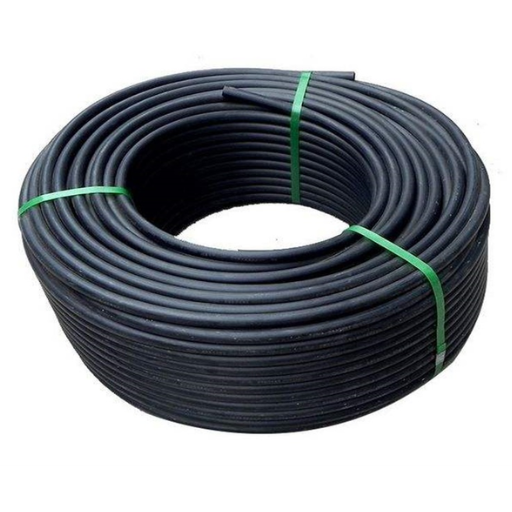
Maintaining HDPE geothermal piping systems requires frequent inspections, checking for leaks, and ensuring tight fittings. From time to time, it is necessary to monitor the system’s fluid quality and pressure levels because changes can indicate underlying problems. Regular purging will prevent deposit formation and maintain reasonable flow rates.
To troubleshoot, first locate obvious leaks or damp spots around connections or joints. If you have detected pressure loss, divide the system into parts to determine which section is faulty. Pressure tests are used to reveal such hidden problems in thermographic cameras. You should also confirm that the circulation pump operates appropriately and see if there are no clogs in the tubes. This way, your geothermal system will last and operate at its maximum.
Regular Maintenance Tips
- Routine Inspections: Annually inspect the entire geothermal installation for signs of wear, leaks, or breakages. Pay particular attention to joints, connections, and insulation.
- Monitor Fluid Levels: Always ensure that the coolant level is checked regularly, replaced when necessary, and taken into account in climatic conditions where freezing occurs.
- System Flushing: Every few years, clean out your pipes by flushing them to get rid of any residue build-up, which helps in effective heat transfer, ensuring that your heating works optimally
- Pump Maintenance: According to manufacturer instructions, the circulation pump’s performance must be examined while lubricating without obstruction.
- Filter Replacement: Frequently replacing filters in the heat pump system results in uncontaminated liquid flow, preventing debris from entering.
- Record Keeping: Homeowners should maintain detailed records of all maintenance activities, repairs, and inspections, which could help identify trends that may require future attention based on patterns over a period.
Using these tips, you can achieve high reliability and effectiveness in your HDPE geothermal pipe life span.
Common Issues and Solutions
- Inefficient Heating or Cooling: Check ductwork for leakage and insulation and ensure the correct functioning of the heat pump. The fluid level check is okay.
- Unusual Noises: When you hear funny noises coming from the system, it may indicate that the circulation pump needs servicing or lubrication. The pump must also be examined to determine if any components need to be tightened.
- High Energy Bills: High energy bills can indicate that your system has been put under excessive stress. Review your maintenance records for overdue service calls, inspect filters for blockage, and consider checking the state of the antifreeze solution, which should be adjusted or replaced.
When such common problems are fixed on time, the efficiency and effectiveness of geothermal systems are maintained.
Expert Advice for Optimal Performance
These expert recommendations can enable you to operate an HDPE geothermal piping system at peak performance:
- Regular Professional Inspections: Organize annual inspections by a qualified technician to assess the system’s performance, identify impending issues, and ensure all parts are working perfectly.
- Optimize System Settings: As seasons change, adjust your thermostat settings and those of the entire heating/cooling system. Setting temperatures a few degrees higher in summer and lower in winter will improve energy efficiency.
- Enhance Insulation: To reduce heat loss around pipes and ducts, better insulation is recommended. This action enhances both home comfort and the efficient functioning of your geothermal systems.
With these tips from professionals, you can maximize the operational life span while reducing energy costs associated with running geothermal heating and cooling systems.
Reference sources
-
International Ground Source Heat Pump Association (IGSHPA): This source provides comprehensive information on the benefits and technical aspects of HDPE pipes for geothermal applications, emphasizing their durability, flexibility, and resistance to corrosion. Read more
-
Plastic Pipe Institute (PPI): This source discusses the advantages of using HDPE piping systems in geothermal heat pump applications, focusing on their longevity, efficiency, and thermal conductivity. Read more
-
Geothermal Resources Council: This source provides insights into using HDPE pipes in geothermal heating and cooling systems, highlighting their effectiveness, cost-efficiency, and reliability in ground source heat pump installations. Read more
Related Articles:Benefits of Utilizing Geothermal HDPE Piping





